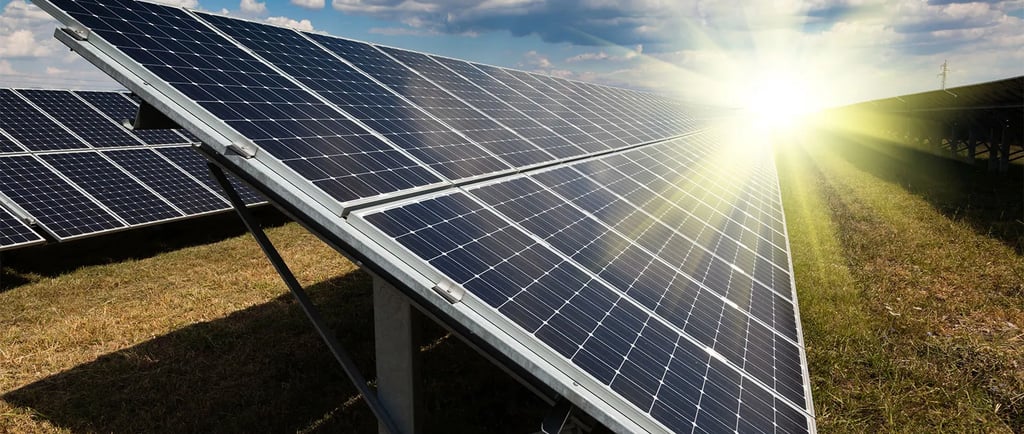Building Better Solar Panels with High-Purity Silica Sand
How Silica Powers Renewable Energy


Silica Sand in Solar Panel Manufacturing: Powering Efficiency and Sustainability
The solar energy industry is at the forefront of the global transition to renewable energy, and the quest for high-efficiency, durable solar panels has never been more critical. At the core of this innovation is silica sand, a raw material essential for producing the ultra-pure glass and silicon components that define modern photovoltaic (PV) technology. This article explores the indispensable role of silica sand in solar panel manufacturing and how Purnomo Silica delivers high-purity, sustainable solutions that drive the industry’s growth.
Why Silica Sand is Vital to Solar Panel Production
Silica sand (≥99.5% SiO₂) is prized for its optical clarity, thermal stability, and chemical inertness, making it a cornerstone of solar technology:
High-Purity Glass Production: Forms the transparent, tempered glass that protects solar cells while maximizing light transmission.
Silicon Ingot Manufacturing: Refined into metallurgical-grade silicon, the base material for solar wafers.
Sustainability: Abundant and recyclable, aligning with the solar industry’s eco-conscious goals.
Key Applications of Silica Sand in Solar Panels
1. Solar Glass Manufacturing
Anti-Reflective Coatings: Ultra-pure silica sand is melted into low-iron glass with anti-reflective properties, boosting light absorption by up to 3%.
Durability: Tempered glass made from silica sand resists hail, UV degradation, and thermal stress, ensuring a 25–30 year lifespan.
2. Silicon Production
Metallurgical-Grade Silicon (MG-Si): Silica sand is reduced in electric arc furnaces to produce MG-Si, which is further purified into polysilicon for solar cells.
Monocrystalline Wafers: High-purity silicon ingots, sliced into wafers, form the backbone of high-efficiency PV cells.
3. Encapsulation Materials
Ethylene-Vinyl Acetate (EVA) Films: Silica nanoparticles (derived from sand) enhance the UV resistance and adhesion of EVA layers that protect solar cells.
4. Tracking and Mounting Systems
Aluminum-Silica Composites: Silica-reinforced alloys are used in solar tracking systems for enhanced durability and corrosion resistance.
Benefits of High-Purity Silica Sand in Solar Technology
Enhanced Efficiency: Low-iron glass increases photon capture, improving panel output.
Longevity: Resists microcracks and delamination, even in extreme weather.
Cost Efficiency: Abundant silica sand reduces material costs compared to synthetic alternatives.
Sustainability: Eco-friendly mining and processing support net-zero manufacturing goals.
Challenges in Sourcing Solar-Grade Silica Sand
Solar manufacturers require sand that meets stringent standards:
Purity: ≤0.01% iron oxide to prevent light absorption losses.
Particle Consistency: 0.5–1.0 mm grains for uniform glass melting.
Trace Elements: ≤10 ppm of heavy metals (e.g., lead, arsenic).
Purnomo Silica meets these challenges through:
Advanced Refining: Acid-washed and magnetically separated sand with ≥99.8% SiO₂.
Custom Grading: Tailored to the needs of glassmakers and silicon producers.
Eco-Friendly Practices: Solar-powered processing and carbon offset programs.
Certifications: Fully compliant with IEC 61215 (solar panel standards) and ISO 14001.
Why Solar Manufacturers Trust Purnomo Silica
Exceptional Quality: Sand optimized for low iron (≤0.015%) and high transparency.
Technical Expertise: Collaboration on silica-to-silicon yield optimization.
Reliable Global Logistics: Supplying solar hubs in China, Europe, and the U.S.
Sustainability Leadership: Aligning with RE100 and Solar Impulse Foundation benchmarks.
FAQs
Q: How does silica sand purity affect solar panel efficiency?
A: Iron impurities as low as 0.1% can reduce light transmission by 2–5%, directly impacting energy output.
Q: Can recycled silica sand be used in solar glass?
A: Yes! Our reclaimed sand meets solar-grade specs, supporting circular economy initiatives.
Q: Is silica sand used in thin-film solar panels?
A: Primarily in the glass substrates, but not directly in thin-film layers like CIGS or CdTe.
Q: Do you supply sand for perovskite solar research?
A: Absolutely—our high-purity sand is ideal for next-generation PV material testing.
Conclusion
Silica sand is the unsung hero of the solar revolution, enabling the high-efficiency, durable panels that power homes, industries, and grids worldwide. As the demand for clean energy surges, the need for premium silica sand will only grow.
Purnomo Silica is dedicated to empowering solar manufacturers with sand that combines purity, performance, and sustainability. Partner with us to harness the sun’s full potential and accelerate the renewable energy transition.
